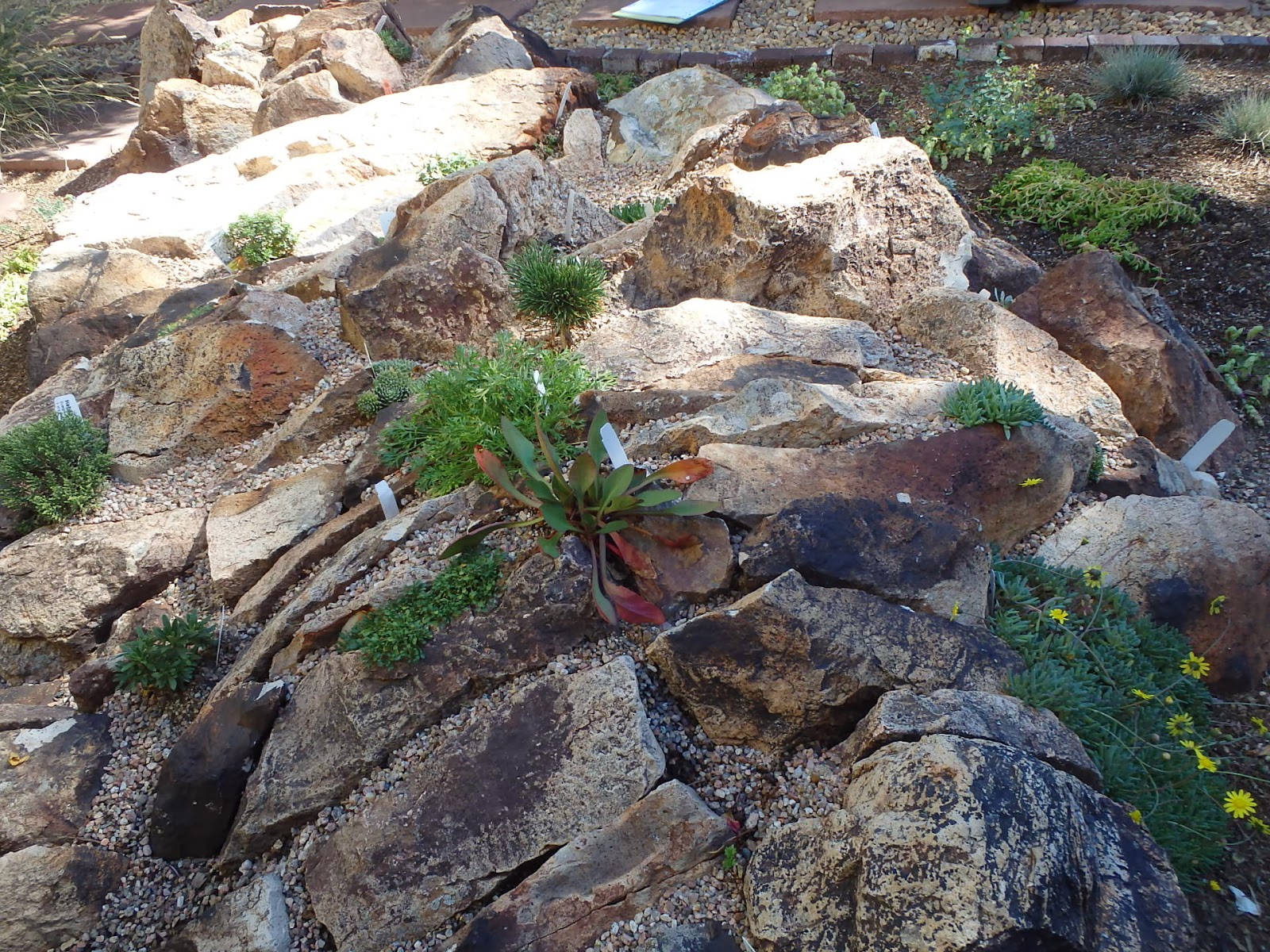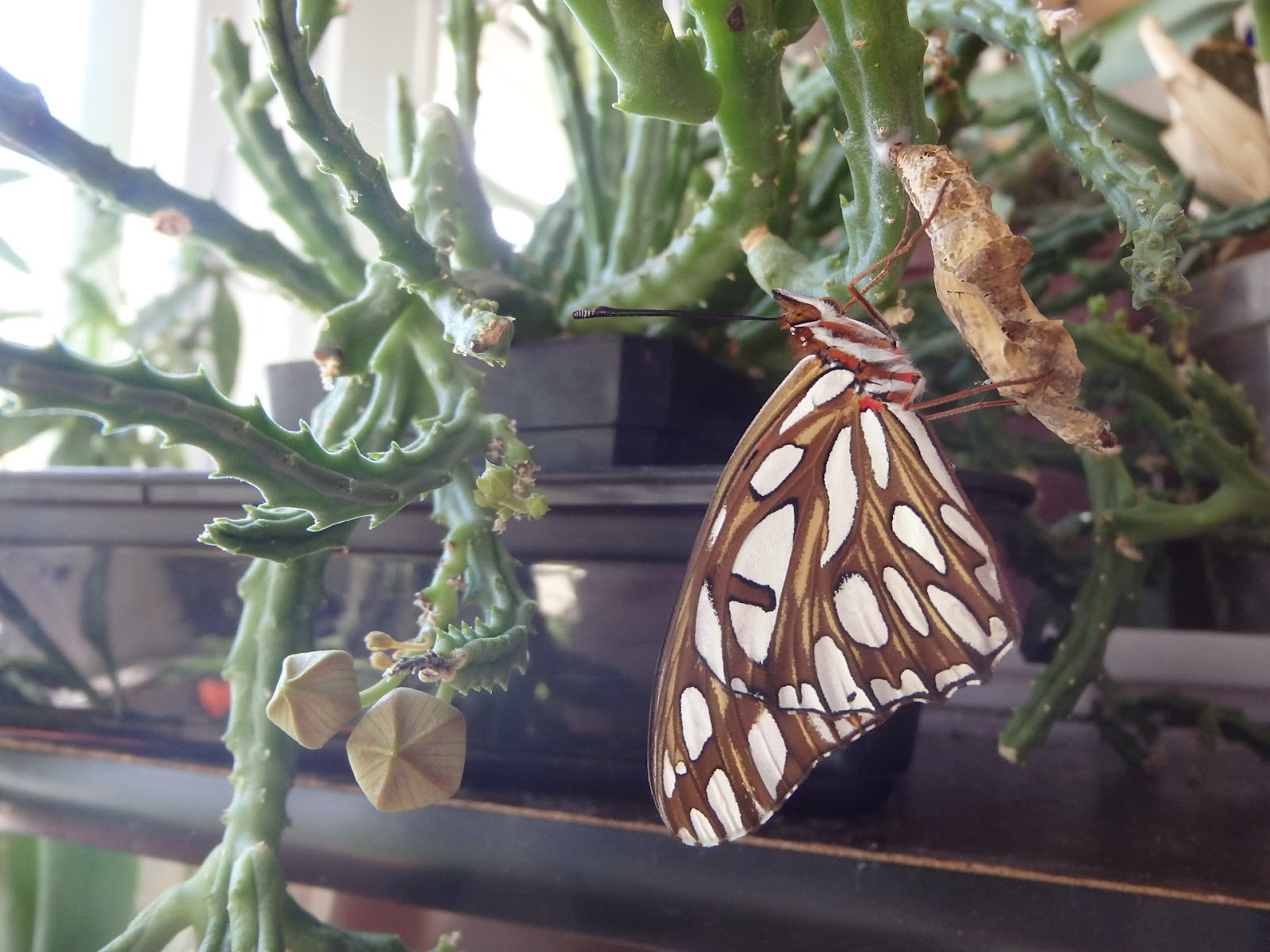"Crevice garden? It never ceases to sound dirty," my best friend says. Constantly.
And it is.
Deleriously dirty.
Here is a post to simply put more Crevice Garden pictures on the internet.

Mike Kintgen's recent crevice feature in the Mordecai Children's Garden at Denver Botanic. This makes my heart flutter; his best work yet, I think. The plants are literally eating it up.
Then, I hazard to follow that up with my main dry sandstone crevice garden, in full-frontal, unflattering view, car bumper, vinyl fence, and all.
And then the news. The new News.
Stephanie Ferguson, Crevice-gardener extraordinaire of Calgary, AB, Canada, came to give a talk to Denver's Rock Garden Society last fall. We were blown away. I clung to her every word. But Linda- oh, poor Linda: She was closest to ground zero by hosting Stephanie at her home, and Linda's own desire for a larger crevice garden exploded under the intense pressure, and with all that perfect autumn weather we had last fall, we built her very own four-ton smart-car-sized Plant-growing machine:
And it is.
Deleriously dirty.
Here is a post to simply put more Crevice Garden pictures on the internet.

Mike Kintgen's recent crevice feature in the Mordecai Children's Garden at Denver Botanic. This makes my heart flutter; his best work yet, I think. The plants are literally eating it up.
Then, I hazard to follow that up with my main dry sandstone crevice garden, in full-frontal, unflattering view, car bumper, vinyl fence, and all.
Last summer, I built one at my apartment. All you really have to do is group a few similar stones closely together. (Well, there is more: stuff the cracks with something drainy like sand or sandy-loam, or sand and gravel mixed. Then top it off with some gravel/chips/small stones to completely cover the soil)
I already regret it. Eh, it's just tolerable.
{It could be much, much better}
Perhaps a better garden, and definitely a better gardener, Lee Ann Huntington has done such nice things with plants in-between the rocks I set. Checking in during the summer with this garden since its birth in spring, we see she has every right to be proud of that Lewisia tweedyi!
And Anita Cox's garden wins the award for filling-in and looking mature within the first year. She has some kind of magic touch.
And then the news. The new News.
Stephanie Ferguson, Crevice-gardener extraordinaire of Calgary, AB, Canada, came to give a talk to Denver's Rock Garden Society last fall. We were blown away. I clung to her every word. But Linda- oh, poor Linda: She was closest to ground zero by hosting Stephanie at her home, and Linda's own desire for a larger crevice garden exploded under the intense pressure, and with all that perfect autumn weather we had last fall, we built her very own four-ton smart-car-sized Plant-growing machine:
Nearly done...
First plants are going in before the gravel topdressing.
The backside of the crevice garden becomes a slope of open soil to accomodate dwarf conifers and bigger herbaceous perennials.
From the front. These 3-D things really don't photograph, admittedly. I'll keep trying.
(Photo courtesy of Linda Meyer)
She had a bit of fun planting.
(Another photo courtesy of Linda Meyer)
OK, a lot of fun.
(Yep, three pictures from our girl)
No, she went wild! And it looks great. Lastly, it has received a grey gravel topdressing, (not shown here) which should be noted as an essential ingredient to this whole Crevice-Garden thing.
But wait, there's more!
Three Crevice Troughs/Pots.
An impeccablely artistic trough by Tony Stireman in Salt Lake City, UT.
Note the extreme topography he has achieved- soaring high over the rim of the pot. And the very happy plants.
My cheap imitation which, despite being of 100% trashcan-sourced materials, and thereby escaping the category of "cheap" with its actual negative material value, excels at growing things that I can't grow anywhere else.
An bonsai-referencing mini-crevice pan by my friend.
(Pediocactus simpsonii in the CSU extension garden, Grand Junction, CO, USA)
I'm telling you.
They (plants) love it.
So, truly lastly, a self-help-flavoured effort to blackmail myself to expedite the process: the blank canvas at my parent's home which promises to become, this spring, a quite large grey-granite crevice garden.
Here's the spots(s).
Here's the stone.
Happy early-early-early spring, my friends.




































